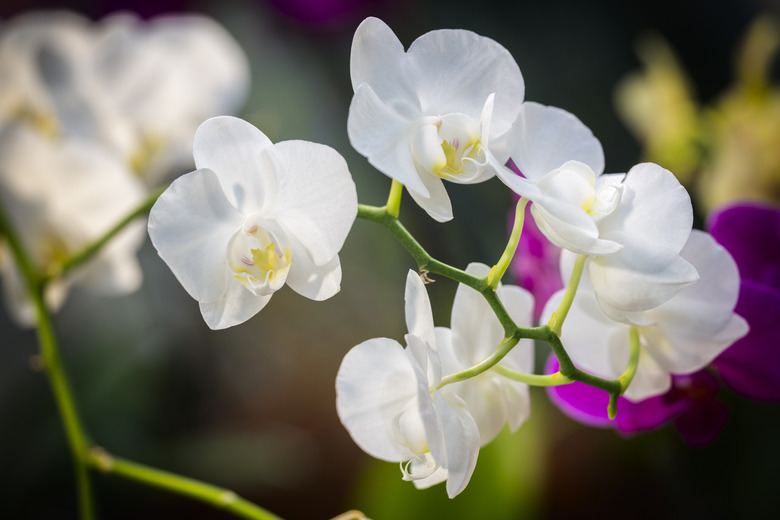How To Dye Orchid Blooms
We may receive a commission on purchases made from links.
The common Phalaenopsis orchid comes in a wide range of colors, but what you may not know is that blue, orange, and green orchids are dyed to achieve their striking color. Many people buy these colored orchids hoping that when they rebloom, the blooms will come back the same — but are sadly disappointed when the blooms are white.
Dyeing new blooms in your own home using the injection method can be risky, so this method is strictly reserved for professionals. An alternative method that you can do at home is spray painting or dyeing your cut orchid blooms to avoid risking your plant's root system and overall health.
Surface Dyeing or Painting
Surface Dyeing or Painting
While painting blooms may seem silly, it is one way of coloring the blooms without damaging your orchid plant. To surface dye an orchid, remove a stem with blooms from the plant so you are dealing with the cut orchid alone and not the overall plant.
The benefit of this method is that it is instantaneous, and it doesn't damage the plant's root system or other tissues since you're coloring a flower on a cut stem. Another benefit of spray painting or surface dyeing is that there are many approaches you can use to add color to your flower. For example, you do not need to paint the entire bloom; you can instead dye only the tips or edges of the petals for an attractive alternative.
You can also enhance the natural color of a white orchid bloom by applying a light coat of floral paint, such as Just For Flowers, to the backs of the petals, which makes the bloom look crisper and cleaner. This technique does not cover the details of the flower, but rather enhances its overall look.
In addition, spray painting can prevent cut blooms, such as those used in bridal bouquets, from wilting so quickly by blocking the evaporation of water from the petals. This won't prolong the life of the flower but may keep the blooms looking perky for a bit longer.
Injecting Dye Through the Stem
Injecting Dye Through the Stem
The method of injection is the one most used by florists, as it's considered the most effective staining method. The dye is drawn into a syringe and injected into the stem of the plant, which then spreads the dye to the buds on that stem.
When dye is administered in this manner, the blooms are quick to change. Although the orchid is at risk of infection where the injection was made, the risk is usually mitigated by sealing the wound with wax. Florists take this risk because this is a fast method and results in beautiful, natural-looking pigmentation.
The major downside of this method is that the plant will be under severe stress and its health may be compromised. If your injection-dyed orchid appears to be suffering, you may be able to save it, but it might be best to stay clear of injection-dyed orchids in the future.
